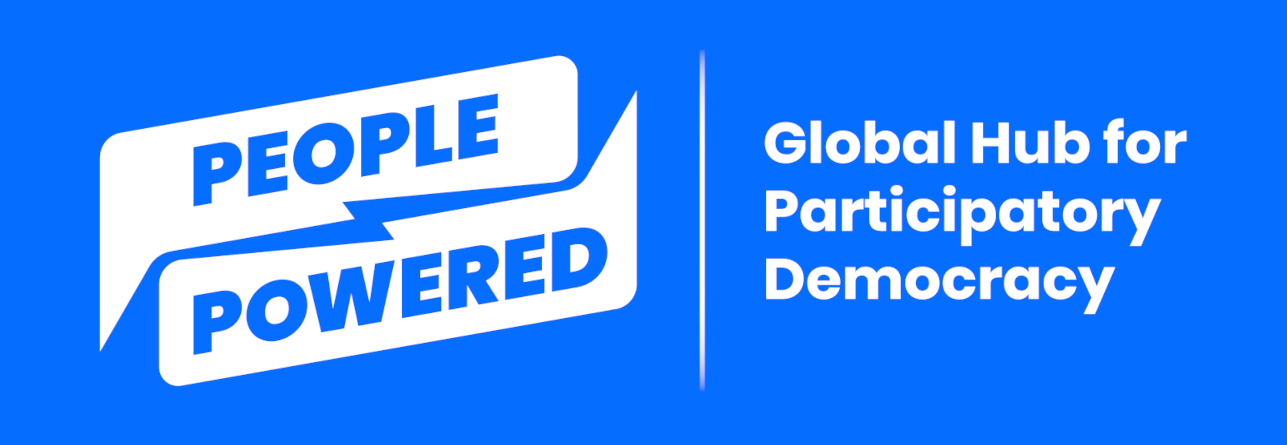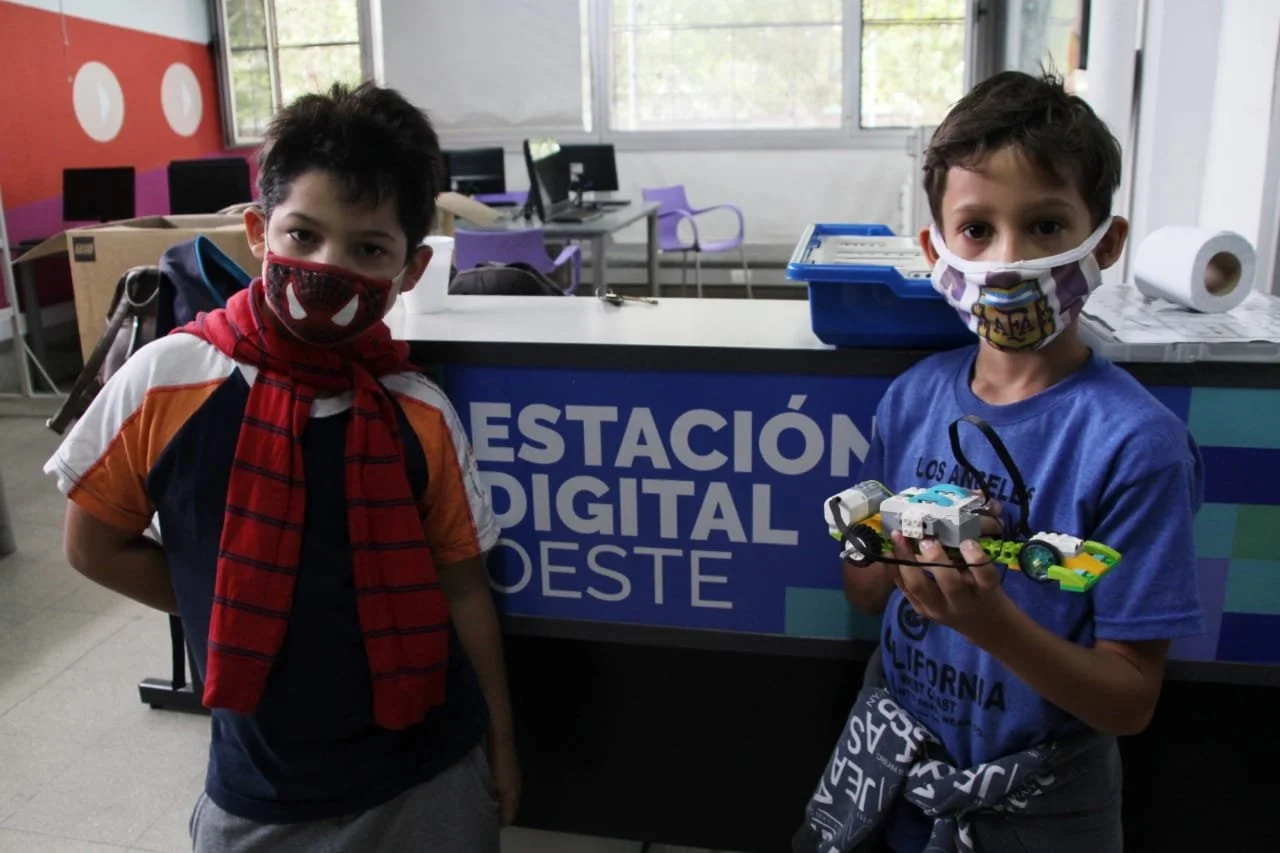Digital platform and training boost participation in rural Kyrgyzstan
/Mendayim Suyunbai Kyzy, using the ARIS online platform to propose and vote on projects to benefit her community
Donors too often set the agenda for the countries and regions they support with their aid dollars. But in this case study, the World Bank project demonstrates how the government can empower local communities to make decisions, facilitated by a digital platform. This is part of a series of stories on digital participation platforms produced with support from TICTeC. To read others in the series, see these case studies from China, Chile and Argentina.
Mendayim Suyunbai Kyzy is a 20-year-old resident of Kashka-Terek village in southwestern Kyrgyzstan. Rural communities there often are conservative and remote, and as a young woman, Mendayim wasn’t very knowledgeable about government operations, or engaged in community-wide civic activities.
“I didn’t know anything about what was going on, or how to get involved,” she says simply.
However, that changed when Kyrgyzstan announced the construction of massive new power lines as part of CASA-1000, an international initiative designed to link the energy systems of Central and South Asia — Kyrgyzstan and Tajikistan with Afghanistan and Pakistan — and enable trading of electricity.
To assure that residents who live along the route of the power lines benefit, rather than suffer a reduced quality of life, the World Bank initiated a community-support program that it hopes will be a model of benefit-sharing for other large infrastructure projects in the region. The support program offers grants and technical assistance for community improvements related to the electricity supply, social “infrastructure” and livelihood generation. A requirement, however, is that the decisions making is within the community and not made centrally.
“At the World Bank, community-driven development is all about decision-making by the people for the people. Beneficiaries must be consulted both during project preparation and implementation,” explains Luiza Nora, senior social development specialist.
It’s all about community members making decisions by themselves. Across Central Asia, communities want to participate in decision-making. I live here, so I hear their ‘voice.’ Damira Temirbaeva
Fortunately, in Kyrgyzstan, the World Bank found a willing partner in the government.
“While the World Bank mandates that projects engage with beneficiaries, most project staff members are either reluctant or go along just to ‘check the box,’” says Luiza. “But in the Kyrgyz Republic, they really embraced the idea, even though it was somewhat new to them, to open up everything. They are proud of what’s been accomplished so far and really want it to work.”
-
What were the reasons for/objectives of the community-support program launched by the World Bank?
What is community-driven development?
Do you practice this in your own area of service?
The implementing agency in this case is ARIS, which has a focus of reducing rural poverty. In October 2020, the ARIS-coordinated community development initiative kicked off in Mendayim’s village with a meeting in which youth were strongly encouraged to attend.
“I was invited,” Mendayim recalls. “I was a little concerned at first, because I wondered if the other villagers would hear me out, given my young age and my lack of knowledge and experience. But I liked it! I noticed how the others had high expectations for the project and their confidence was contagious. Since then, I have been trained in how to work with people, and now I am much less fearful. I’ve become fully engaged!”
“Fully engaged” means helping with coordination and outreach during each of the four stages of the community-development initiative.
Engaging all stakeholders
Daniyar Ashiraliev, community support project and social mobilization specialist for ARIS, explains that activities kick off with an awareness-raising campaign that includes roundtables at the oblast (province), district, rural subdistrict and village levels. The purpose is to share an overview of the CASA-1000 community support project and explain its importance to the social and economic development of the region.
In the second phase, local volunteers are elected, with an emphasis on young people and women. It was at a village recruitment meeting that Mandiyem was introduced to the effort.
She and others act as “community reporters” who reach out to other residents to help complete an assessment of existing resources and perceived electrical, social and economic needs.
“One of the advantages of this assessment is that, for the first time, we’re creating documentation of a territory’s infrastructure and its needs,” says Damira. “Now, whenever another donor talks to ARIS, they can say, ‘The World Bank is paying for electricity, please fund a school or a medical center.’ It’s also critical for their own local planning.”
Focus group discussions come next, during which residents develop a prioritized shortlist of projects based on community needs. These are followed by a vote. (There are three cycles of this process: once for electrical projects, a second time for social infrastructure and a third for economic initiatives.) The discussion and voting stages were always hindered by low participation rates due to limitations on people’s ability and desire to show up in person. Fifty people at a meeting was considered good. But when COVID hit, the problem became pressing.”
-
What stages of community engagement were implemented?
What was the overall challenge?
What do you think your biggest challenge is/would be?
Introducing: digital participation
“The World Bank tries to make sure that every project involves its beneficiaries in some way in decision-making. But only since the pandemic have we resorted to digital platforms,” says Pietro Fiorentini, social development consultant for the World Bank. “One of the dynamics in this sort of organization is that it often comes down to individual champions, within certain departments, to push for change. Before COVID, Luiza’s predecessor was interested in pursuing online engagement, but it was always discarded; it was preferred to conduct community consultations in person in public spaces. But the pandemic opened up new opportunities because it forced teams to do something else.”
Pietro was tasked with researching the available online civic tools.
“We faced multiple challenges early on. For example, people are naturally skeptical whenever you introduce something new. And sometimes, ministries or implementing agencies were already too stretched and had limited capacity,” explains Pietro.
In his research, he says, he noticed the difference between civic engagement tools and civic engagement platforms. There are a lot of online tools, like Survey Monkey, Ushahidi, Tindie, You Record and SeeClickFix. And then there's online platforms, which include several interconnected tools that promote ongoing, two-way engagement.
“We opted for the comprehensive route so implementation teams don't have to use multiple tools and their data isn’t fragmented,” says Pietro. “We chose Your Priorities (developed by the Citizens Foundation) mainly for its ease of use and flexibility.”
The ARIS-branded home page of its online portal
Another challenge Pietro says he often encounters with partner governments and organizations is the need to understand that “these platforms are not websites. Ministries or implementation units often approach them initially as a website where they just publish information. A website only provides information; it doesn't enable two-way engagement between beneficiaries and the implementation unit. A platform is also about seeking feedback, engaging communities, prioritizing events, and so on.”
Pietro notes that typically “there has to be a lot of hand-holding during the initial phase, even one year on,” when a new technology platform is introduced. That’s why, at the beginning of the Your Priorities introduction, he says “there was a lot of initial skepticism both within the World Bank and outside. Everyone’s overstretched and lacking in capacity. It’s hard to make time for training and to appoint someone to care for and manage a platform.” However, Your Priorities has been very easy to deploy. “It's sort of like an Ikea cupboard. You have all the pieces and can set it up quickly. I've developed the platform in one day, and probably within a week it can be operational for specific tasks.”
Another advantage is that Your Priorities is open source. The cloud version can be used for free, or it can be tweaked. The ARIS team has wholeheartedly embraced it, and has contracted with the foundation for additional technical support.
“For us, it was a rather new approach. But we got used to it quickly with the help of the consultants.” Daniyar Ashiraliev
ARIS’ technical experts even have integrated the agency’s management information system into the platform, so they can now pull in all the data they want. All of the content can be exported either as an Excel sheet, CSV file or Word document, which makes it easier to analyze it.
In addition, the Your Priorities interface was customized to incorporate the ARIS brand colors and logo, a welcome video message from the agency team, and a link to the main ARIS website.
-
Why did the World Bank and ARIS decide to incorporate a digital participation platform?
What are some considerations the World Bank considered when researching and selecting an online platform?
What characteristics are important to you?
Broadening the audience
Going digital was effective as well because mobile internet connectivity is broad in Kyrgyzstan, and the cheapest among members of the Commonwealth of Independent States. A survey showed that every household had at least one smartphone with Wi-Fi connectivity, thus allowing everyone to participate in project prioritization. In addition, ARIS held several meetings with local internet providers, who announced plans to expand mobile internet coverage to 100%. To train elderly residents how to use the platform, ARIS produced video tutorials and sent “technology-inclusion” volunteers out to help seniors input their comments and votes.
The app’s user-friendly features include the ability to comment — anonymously if desired — via text, photo, audio message (with an automatically generated transcript) or video. Artificial intelligence is used to screen out inappropriate language and content.
And the app isn’t just for discussing and voting at the beginning of a project. It now has expanded to include “participatory monitoring,” including a mechanism for submitting complaints and concerns, which they also can do anonymously.
In the middle of the pandemic, community members were asked whether they wanted to resume construction on a school overhaul during the lockdown.
As for Mendayim, she loves the online platform. “During online discussions, it is easy for me to express my opinions, without just following others’ lead. If I’m not ready at the moment to make a decision, I have plenty of time to familiarize myself with the materials and then make up my mind.”
To spread the word to other villagers, she and others use WhatsApp groups to share links, videos, etc.
Accelerating engagement
Going digital rapidly accelerated the number of people who are engaged, even as the pandemic wound down. Several project activities have been carried out, involving more than 300,000 people — an estimated 33% of the adult population in the area targeted for the CASA-1000 Community Support Project.
Women’s participation has particularly increased. In some conservative homes in the southern region, it’s frowned upon for women to be active outside the home. “But the platform allows them to read and engage during the night, when everyone else is going to sleep. It is also an opportunity for young women to speak out, since they are constrained around their elders (parents and in-laws),” says Damira. “They take out their smartphones and participate. Some of them, like elder women who are unemployed and sitting with their grandkids, are saying, ‘what more can you provide us via our smartphones? Can you give us some training, so we can learn something?’ We’ve discovered they learn better, though, when video tutorials supplement the text.”
Venera Asanalieva, beneficiary feedback mechanism and online platform specialist for ARIS, says there is also an option for participating anonymously. With the help of this and other features of the online platform, the target of 50% female participants has been reached.
-
How did the digital platform help expand participatory decision-making in this remote, rural community?
Before implementation, how did ARIS encourage and help community members to embrace the platform?
What would/do you need to do to encourage use of online tools?
Impacting people’s lives
An electrical worker implementing the improvements voted for by Mendayim’s village
For Mendayim, the benefits of the project has extended beyond her expanded sense of empowerment. She also has seen concrete improvements in her community.
When her village was asked what electrical improvements they most wanted, they were offered three options, based on the government’s technical assessment: improvement of the existing electricity system, extension to new settlements or street lighting. Mandayim chose improvements to the existing lines, and her fellow residents agreed. The system was outdated, and due to the very low level of voltage, households could typically get electricity for only one activity at a time, such as lighting. The capacity simply wasn't enough to also run a washing machine, for example.
“When construction workers started to install the poles and power lines, I visited the site quite often. I felt personally involved,” she says.
For economic improvement, Mendayim voted for the purchase of a rice harvester, a decision still under discussion. And for social infrastructure, she submitted her own proposal: a children’s playground.
“I would like our children to have a safe place to play, and for parents to come and have a rest. Due to the lack of such opportunities now, our children play along the highway; it is very dangerous,” she says. “I was so excited and happy when it was chosen!”
Construction of her playground is expected to begin soon.
Key lessons
Benefits of digital participation platforms
Broadens participation to individuals who cannot attend in-person meetings, such as women in conservative communities.
Integrates individual technology enablers (such as social media and surveys tools) into one “vehicle.”
Provides data that can be analyzed for helpful insights.
How to use digital platforms effectively
Allow anonymous comments
Supplement text with video.
Provide in-person and video tutorials.
Supplement with other online channels, such as WhatsApp, and offline outreach.
Use young people to reach out to elders to offer training and support.
Ready to explore further?
Visit the People Powered Digital Participation Platform Guide and ratings.
Sign up for coaching by an experienced mentor.
Subscribe to the People Powered newsletter if you have not already, to learn about upcoming workshops, courses and other learning opportunities.











